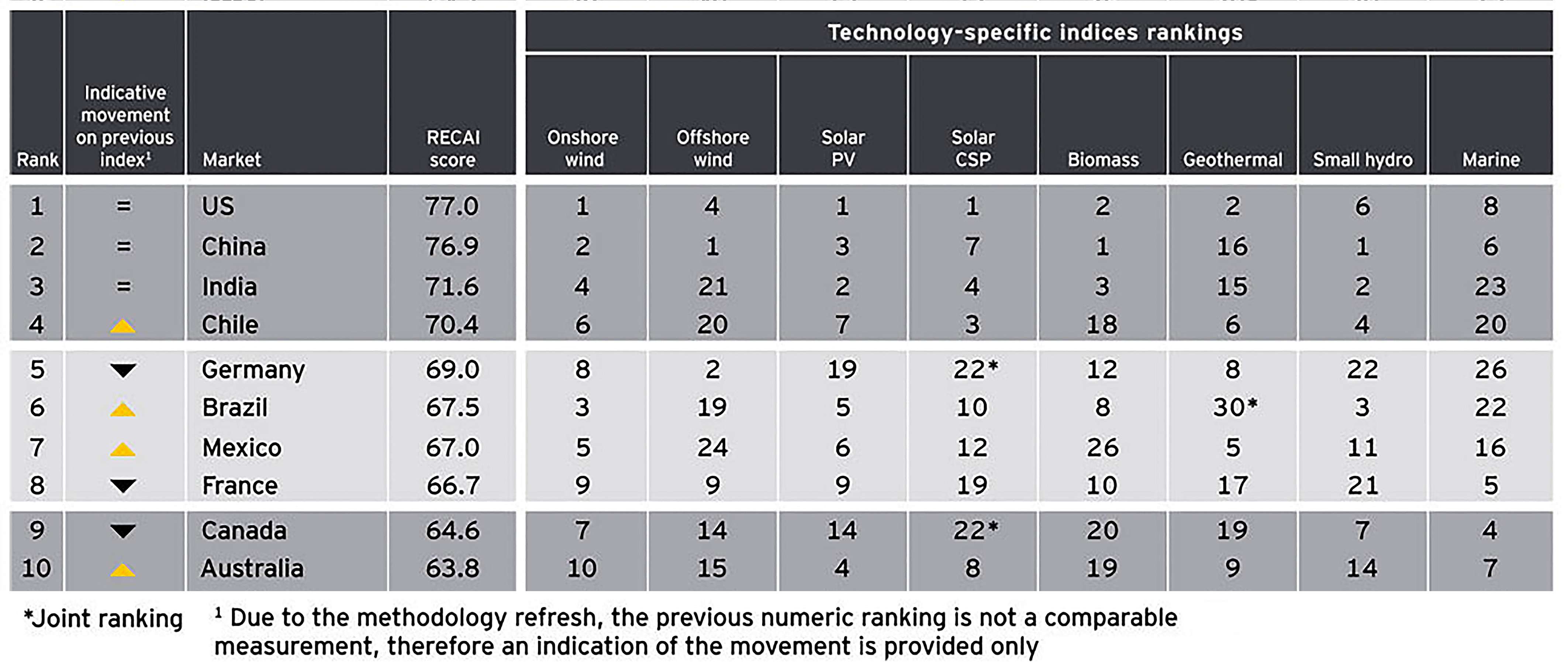Consultancy firm Ernst & Young has ranked India’s renewable energy sector third in the Renewable Energy Country Attractiveness Index (RECAI) with China at second and the US on top. The so-called emerging markets now represent half the countries in the 40-strong index, including four African markets featuring in the top 30. Just a decade ago, only China and India were attractive enough to compete with more developed markets for investment. While the top three countries maintained their ranking, Chile, Brazil and Mexico climbed higher in the index to be ranked in the top 10 at the fourth, sixth and seventh, respectively. Germany at fifth and France at eighth fell in the latest ranking.
Kuljit Singh, partner (infrastructure practice) at EY, said: “The report demonstrates that low solar bids are not a phenomenon restricted to India, but countries such as Mexico and UAE have also been reporting very low solar bids. As is the case with India, wind continues to be at a pricing premium to solar in the rest of the world, but both these technologies are racing towards grid parity, which may lead to not-so-desirable consequences for traditional utility business models.”
India’s position is thanks to the strong focus of the government on renewable energy as well as timely implementation of renewable energy projects. The report also suggests that with the growing number of jurisdictions contracting utility-scale renewable energy through competitive auction processes, renewable energy is increasingly proving its mettle against conventional energy generation.
Renewable energy auctions in India, South Africa and Peru saw bids that fossil generators would struggle to match. “The falling cost of renewables and their growing ability to challenge and displace fossil fuel generation without subsidy, once long-term power purchase agreements (PPAs) from creditworthy counterparties, are an option in any market,” EY said.
The index ranks 40 markets on the attractiveness of their renewable energy investment and deployment opportunities, based on a number of macro, energy market and technology-specific indicators.










